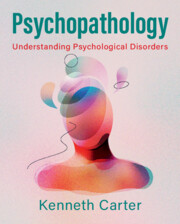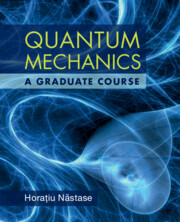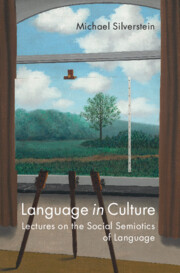Refine search
Actions for selected content:
36807 results in Cambridge Textbooks
Appendices
-
- Book:
- A Hands-On Introduction to Machine Learning
- Published online:
- 20 January 2023
- Print publication:
- 29 December 2022, pp 367-404
-
- Chapter
- Export citation
Chapter 4 - Gricean Pragmatics
-
- Book:
- Pragmatics in English
- Published online:
- 29 December 2022
- Print publication:
- 29 December 2022, pp 64-87
-
- Chapter
- Export citation
Dedication
-
- Book:
- A Hands-On Introduction to Machine Learning
- Published online:
- 20 January 2023
- Print publication:
- 29 December 2022, pp v-vi
-
- Chapter
- Export citation
Appendix - Appendix: Multimodal Analysis
-
- Book:
- Digital Communication and Media Linguistics
- Published online:
- 18 February 2023
- Print publication:
- 29 December 2022, pp 251-264
-
- Chapter
- Export citation

Psychopathology
- Understanding Psychological Disorders
-
- Published online:
- 22 December 2022
- Print publication:
- 22 December 2022
-
- Textbook
- Export citation

Quantum Mechanics
- A Graduate Course
-
- Published online:
- 22 December 2022
- Print publication:
- 04 August 2022
-
- Textbook
- Export citation

Language in Culture
- Lectures on the Social Semiotics of Language
-
- Published online:
- 22 December 2022
- Print publication:
- 22 December 2022
-
- Textbook
- Export citation
39 - Decoding Hidden Markov Models
-
- Book:
- Inference and Learning from Data
- Published online:
- 17 March 2023
- Print publication:
- 22 December 2022, pp 1563-1608
-
- Chapter
- Export citation
Index
-
- Book:
- Psychopathology
- Published online:
- 22 December 2022
- Print publication:
- 22 December 2022, pp 569-586
-
- Chapter
- Export citation
Dedication
-
- Book:
- Psychopathology
- Published online:
- 22 December 2022
- Print publication:
- 22 December 2022, pp v-vi
-
- Chapter
- Export citation
Notation
-
- Book:
- Inference and Learning from Data
- Published online:
- 17 March 2023
- Print publication:
- 22 December 2022, pp xlv-lii
-
- Chapter
- Export citation
4 - Anxiety, Obsessive-Compulsive, and Related Disorders
-
- Book:
- Psychopathology
- Published online:
- 22 December 2022
- Print publication:
- 22 December 2022, pp 96-135
-
- Chapter
- Export citation
2 - Psychopathology Perspectives: Theories and Treatments
-
- Book:
- Psychopathology
- Published online:
- 22 December 2022
- Print publication:
- 22 December 2022, pp 30-69
-
- Chapter
- Export citation
Copyright page
-
- Book:
- Psychopathology
- Published online:
- 22 December 2022
- Print publication:
- 22 December 2022, pp iv-iv
-
- Chapter
- Export citation
3 - Research, Assessment, Diagnosis, and Treatment
-
- Book:
- Psychopathology
- Published online:
- 22 December 2022
- Print publication:
- 22 December 2022, pp 70-95
-
- Chapter
- Export citation
Lecture 4 - Enregisterment
-
- Book:
- Language in Culture
- Published online:
- 22 December 2022
- Print publication:
- 22 December 2022, pp 115-153
-
- Chapter
- Export citation
48 - Value Function Approximation
-
- Book:
- Inference and Learning from Data
- Published online:
- 17 March 2023
- Print publication:
- 22 December 2022, pp 2008-2046
-
- Chapter
- Export citation
Glossary
-
- Book:
- Psychopathology
- Published online:
- 22 December 2022
- Print publication:
- 22 December 2022, pp 510-519
-
- Chapter
- Export citation
29 - Linear Regression
-
- Book:
- Inference and Learning from Data
- Published online:
- 17 March 2023
- Print publication:
- 22 December 2022, pp 1121-1153
-
- Chapter
- Export citation
Lecture 7 - Relativity
-
- Book:
- Language in Culture
- Published online:
- 22 December 2022
- Print publication:
- 22 December 2022, pp 252-297
-
- Chapter
- Export citation
